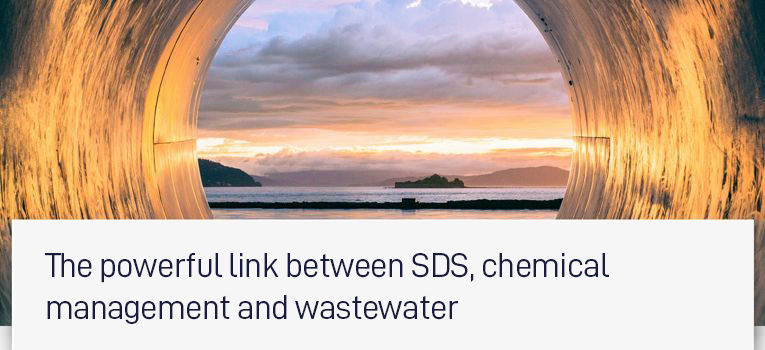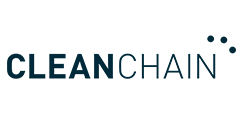The powerful link between SDS, chemical management and wastewater
Article
Managing hazardous chemical usage in your extended supply chain is complex and time-consuming.
The data is often difficult to obtain and when you do finally manage to source the information required, the credibility is questionable. This blog seeks to explore the link between SDSs, chemical management and wastewater emissions data and how CleanChain makes use of a combination of these data points to improve the management and integrity of your value chain’s chemical and wastewater emission data within one combined system.
CleanChain’s four-step approach
CleanChain’s approach to managing hazardous chemical usage within an organization’s value chain is three-pronged: making use of data from SDSs, chemical inventories and wastewater emissions. By triangulating these three data sources, we can provide the level of transparency brands demand.

How this works:
Step 1 – Safety Data Sheets (SDS)
CleanChain provides suppliers with the ability to seamlessly bulk upload SDSs by dragging and dropping the relevant SDSs across into the CleanChain platforms.
Step 2
CleanChain’s AI technology quickly parses the relevant data from a facility’s SDS with the focus being primarily on sections 1, 2, 3 and 9. The solution extracts key data points from the files, including product name, formulator information, CAS numbers, ingredients and concentration, hazard codes and more. The bulk upload feature and parsing of relevant product details across removes the cumbersome task of having to manually input this data, saving your team hours of laborious administration. IMPORTANT NOTE: All chemicals should have an SDS.
Step 3
The SDS data is automatically cross referenced to the Product Library where CAS numbers are then assigned to their associate chemical. Once the CAS numbers have been extracted, they are compared to the ZDHC wastewater guidelines and permits where applicable for us to ascertain whether a chemical within the product is causing one of your MRSLs to flag an alert against the wastewater guidelines.
Step 4
CleanChain then provides detailed reporting on the alerts flagged and the cause. Additionally, soon, we will provide CAP capabilities where action plans will be set up to address alerts as well as a process to submit, track and verify that each alert has been addressed.
Chemical management
All the SDS data is gathered in a single platform and the user is provided with digestible reports and analytics to act upon. Suppliers and brands can automatically connect their chemicals to the ZDHC Gateway for up-to-date conformance data. Each of the chemicals identified are scored by leading independent third-party providers, Scivera and ToxServices. Both providers are independent and use the same standardized, transparent scoring methodology, providing full material disclosure of the assessed formulations. This feature will rate and assess each chemical substance against conformance and help organizations make more environmentally friendly choices through the identification of best-in-class chemicals or better alternatives for the supply chain to implement. A Product Library also helps the suppliers and brands make better-informed sourcing and manufacturing decisions to improve their efficiency and environmental commitments.
Wastewater management
Within CleanChain, Facilities can connect wastewater lab results to their Chemical Inventories. These can be evaluated against industry standards, such as ZDHC, Manufacturing Restricted Substance Lists (MRSLs) and local permits. Brands can gain visibility to this vital information to see their current wastewater emissions data, their current and predicted performance and improve standards, if necessary, through corrective actions.
Any high-risk ingredients can be identified, and safer, environmentally friendly alternatives can be sourced immediately.
Wastewater reports can be uploaded directly from the ZDHC Gateway where the report is then verified. Additionally, facilities and laboratories can upload the wastewater reports directly to the CleanChain platform. However, in such cases, the reports are not verified.
Key brand benefits of linking your SDS, chemical management and wastewater
- Identify Suppliers who are conducting testing and those that are not
- Identify Suppliers who are meeting your wastewater discharge standards through a custom KPI
- Predict Wastewater discharge alerts from your product inventory
- Ensure you are eliminating the use of hazardous chemicals and environmental emissions
- Understand and reduce risks across your value chain
- Improve and ensure MRSL, RSL and permit compliance
- Demonstrate your progress against environmental commitments
- Keep abreast of impending legislation focused on chemical traceability (historic behavior and future), such as the European Union’s Green Deal
Why do we need more chemical transparency?
A recent study released by NRF and IBM found that nearly two-thirds (62%) of consumers globally say they are willing to change their purchasing habits to reduce their environmental impact. Brands that are not able to demonstrate transparency around their value chain’s chemical usage and the emissions generated during the production of their products pose a significant threat to their sales.

Today’s investors and consumers are increasingly becoming concerned with what brands are doing to deliver more sustainable products, and the role they play in driving a more ethical and environmentally aware industry. If ESG is not a term that your organization has prioritized in the boardroom, you could easily find yourself on the wrong side of the law.
Gain unprecedented visibility into your value chain’s wastewater emissions and gain visibility and traceability with the CleanChain solution.








